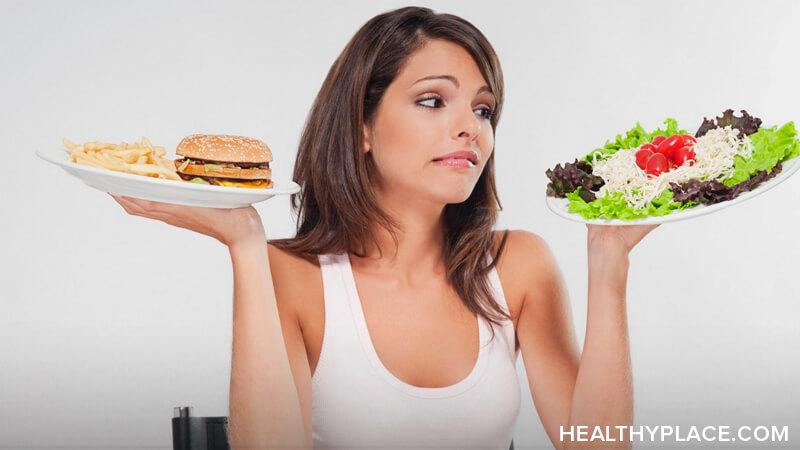Eating Trigger Foods in Eating Disorder Recovery

Eating trigger foods in your eating disorder recovery can feel terrifying at first. The reason the foods are trigger foods in the first place is because they cause anxiety and trigger the neural pathway to act on our eating disorder pattern, whatever it may be. Eating trigger foods as a part of your recovery can be a freeing process.
Seeing or Eating Trigger Foods Causes High Anxiety
Trigger foods are different for everyone. Years ago, when I was in inpatient eating disorder treatment I remember one of the women there told me that every time I would eat a peanut butter and jelly sandwich her anxiety would shoot through the roof. For her, it broke all her counting rules with sugar and carbs. This amused me because, for me, peanut butter and jelly sandwiches were on my list of safe foods. "Safe" meaning I wouldn’t want to throw them up afterward.
Trigger Foods Vary from Person to Person
I had different trigger foods. On of mine used to be pasta. For some reason, I had convinced myself that every noodle was going straight to my hips. Of course, this is untrue but it made it difficult to eat pasta for years without my past pattern of being triggered to throw it up. The anxiety I’d experience shot through the roof when I ate the taboo or trigger foods, and I convinced myself I could avoid them altogether.
However, as we all know, food is a part of life and we can’t just ignore food forever. Well, not happily at least. And I wanted a full life, one in which I was able to eat any food that I wanted and not be triggered to throw it up.
How to Treat Anxiety Caused by Eating Trigger Foods
In psychology, there’s a process called systematic desensitization. It’s a behavior therapy often used for people in therapy for anxiety disorders. The goal is to remove the fear response of a phobia. For example, Joe might be terrified of snakes. A possible way this therapy could go is to first make you think of a snake miles away in the zoo, then later show you a picture of a snake, then as it progresses maybe have a snake in the cage in the far corner of the room.
The point of this therapy is to allow the client to be able to sit with the discomfort and utilize relaxation techniques against the anxiety that comes up. The goal is for the client to be able to slowly work their way away from the phobia. Joe may never have a snake as a pet, but, eventually, he may be able to walk past them at the zoo without a reaction.
The same process can be likened to eating disorder recovery and the experience of eating trigger foods. The foods for each individual will be different and you know what they are. Practice introducing a small amount of these foods into your recovery plan.
You can use the concept of systematic desensitization. Think about the food and picture yourself buying or preparing it. Then you can picture yourself eating it. If it’s a bowl of pasta, you can start with only having one single noodle and stay with the anxiety using self-soothing or relaxation techniques.
Even when you’re recovered, you may choose not to eat as much of certain foods that used to trigger you, but the freedom comes when you are able to eat them and be at peace.
How to Eat a Cookie in Eating Disorder Recovery
APA Reference
Zoccolante, Z.
(2017, June 7). Eating Trigger Foods in Eating Disorder Recovery, HealthyPlace. Retrieved
on 2025, December 27 from https://www.healthyplace.com/blogs/survivinged/2017/06/incorporating-trigger-foods-into-eating-disorder-recovery
Author: Z Zoccolante
Great read! Most people think of trigger situations or events for things like PTSD, anxiety, bi-polar etc, but thinking of trigger foods for ED recovery is such an important reminder! They will absolutely vary from person to person but being aware of what your triggers are will not only be helpful for recover it will also be empowering, and that in itself is hugely helpful.
Thank you. I like how many therapy tools can be crossed over to help heal from other disorders. Empowering oneself for recovery is definitely the goal and whatever tools work best for each person is great.
What a great post! I think it will really resonate with people of this disorder which is something so important to address! There a lot of individuals out there with this disorder, believe it or not, so tackling it with this technique is wonderful!
Thank you. There are so many people out there with eating disorders and so many millions of family members and loved ones as well.
Thank you. Yes, there are so many people and their loved ones too.